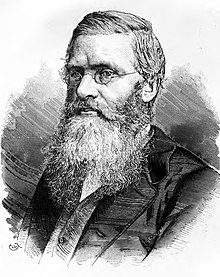TANTALIZER No 226 NEW SCIENTIST
SCHOOL COLOURS
"Tell Me, Professor Pinhole, which school does your daughter Alice go to?"
"Let me think. Is it the one with the orange hat and the turquoise scarf? or with the khaki blazer and orange emblem? or with the pink blazer and orange scarf? or with the khaki scarf and pink emblem? or with the khaki hat and turquoise emblem? I fear I cannot recollect."
"Good Heavens, Professor! However many schools are there?"
"Just four and I have one daughter at each. Bess goes to St Gertrude's, Clare wears a turquoise hat and Debbie wears a khaki emblem. St Etheldreda's flaunts a pink scarf, St Faith's an orange blazer and St Ida's a pink hat."
"And whose are those clothes flung down on the floor over there?" "The turquoise hat and the khaki blazer belong to different girls. As for the turquoise blazer, well, I think you might work out whose that is for yourself."
Martin Hollis
In fact some of the work I did with the
TANTALIZE package in the 1970s is relevant to the brain modelling work I am doing now - and a little of the history is relevant.
In 1972 I started the work of implementing the second version of the CODIL interpreter on the 1903A computer at Brunel University with a view to concentrating of open-ended commercial and data base tasks once I had got the system up and running. One day I had a discussion with a colleague, Roland Sleep, and he pointed out that while there was a lot of hype about Artificial Intelligence what was actually being done was comparatively simple - and he lent me a copy of a Ph.D. thesis on one of the leading problem solver packages. Within three days I had CODIL up and running the key examples in the thesis. I followed this up and used CODIL to implement a problem solving package which I called TANTALIZE - which, among other things solved the Tantalizer "brain teaser" puzzles for 15 consecutive weeks as they were published in the New Scientist. The first paper I wrote was
TANTALIZE with included a number of examples of CODIL on its own and using the problem solver.
The reason for mention TANTALIZE now is that CODIL was not designed to be a programming language, but as it is designed to reflect the user's view of his information processing task it has to accommodate users who want to use it to "write programs". TANTALIZE is by far the biggest CODIL "programming" task written and can be considered as a sophisticated production rule system, written in, processing, and obeying production rules. The first phase is to ask the user a series of questions about the task, and also any general information on the type of task and the resources needed. The second phase turns the user input into a set of production rules and in some cases the package uses dynamic learning to sort the rules into a "most likely to succeed" order - which can lead to orders of magnitude reductions in the time needed in the third stage. The third stage take the optimised production rules and uses them to search the problem space and present the answer.
I continued solving problems with TANTALIZE but immediately ran into difficulty with the peer review system in getting A.I. papers accepted - so I simply switched to other application areas and dropped the work on heuristic problem solving. After all CODIL was not designed to handle small well-defined closed problems - but naturally t can do them because they are a subset of the bigger less well-define open-ended real world problems with which it is really concerned.
In retrospect it is interesting to look at why, for example, a paper was rejected as "Too theoretical - will never work" when I had reported in detail the way the package actually solved a wide range of problems. Or why I was told about another that if I wanted to get papers accepted I should use the POP-2 programming language. A paper sent to a leading journal in the USA came back with two vitriolic reviews, one reviewer admitted to not understanding it, and there was one favourable review. I was so cheesed off by multiple rejections at this stage I just junked it and only some years later rediscovered the covering letter from the editor (who would have know who the reviews were) which ended with the advice that I should continue as he felt there must be something in it to have annoyed two of the reviewers so much.
Of course the real problem is that we are all trapped in the mental boxes we have constructed for ourselves during our lifetime and my mental box did not overlap with the mental boxes of the majority of the A.I. establishment. For instance I approached the problem from the angle that there are many very complex open-ended problems - with no simple solutions - and to me the logic puzzles were a trivial artificial subset of the real world - where there were precise pre-defined rules and unique answers. The A.I. establishment at the time concentrated on applying formal mathematical models to closed tasks - such as game playing - in the belief that this was the way forward to modelling intelligence. My papers did not fit in as they were not expecting a solution coming from the area of open-ended and poorly defined tasks. Looking back it is clear that I was not really aware of how counter-intuitive some of my ideas were. I suspect that most genuine "outside the box" research has similar problems with peer review systems for both academic publication and research grants.
--------
If you read the TANTALIZE paper earlier you will find the missing sections have now been added.
An account of the TANTALIZE package published in the New Scientist is below the break.





